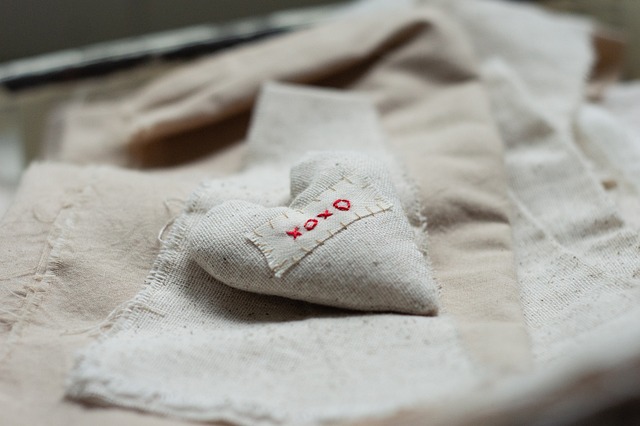The Exciting Journey of Becoming a Jewelry Designer
Embarking on the journey of becoming a jewelry designer can be both thrilling and daunting. The world of jewelry design is incredibly diverse, bursting with opportunities for creativity and self-expression. If you’ve ever found yourself captivated by unique pieces of jewelry or dreamed of creating your own designs, starting a side hustle as a jewelry designer might just be the right path for you. This article covers every aspect of launching your handmade business, including inspirations, the materials you’ll need, methods of production, marketing strategies, and how to effectively sell your creations. So, let’s dive into this vibrant realm together.
Finding Your Niche in the Jewelry World
The first step in your journey to become a successful jewelry designer is identifying your niche within this bustling industry. The jewelry market offers an array of styles, materials, and themes. Are you drawn to minimalist metal designs? Or perhaps vibrant, intricate beadwork speaks more to your creative spirit? You may want to consider avenues like bohemian, vintage, or even eco-friendly jewelry. Understanding your preferences and strengths will help you carve a space for your brand. You don’t have to stick to one niche, but it’s wise to start by focusing on what truly inspires you. This can help establish a recognizable brand identity. By specializing, you improve your chances of connecting with a specific audience that appreciates your unique style.
Furthermore, explore current market trends and customer preferences. Social media platforms, especially Instagram and Pinterest, serve as gold mines for inspiration and insight into what resonates with potential customers. Look closely at what styles are gaining traction and consider how you can infuse your personal flair into those trends. Engaging with online communities can also provide valuable feedback. Ask potential customers what attributes they value in jewelry; whether it’s sustainability, craftsmanship, or originality. Gauge their responses and adapt your vision accordingly. With a solid foundation, you can confidently begin your side hustle, equipped with clarity and purpose.
Gathering the Right Tools and Materials
Once you’ve defined your niche, it’s time to gather the necessary tools and materials to start creating. If you think you can simply dive in without proper supplies, you might want to think again. A well-equipped workspace is crucial for any jewelry designer. Essential tools include pliers, cutters, a soldering iron, and a workspace that is both functional and inspiring. Moreover, the materials you choose will depend on your design style. For instance, if you’re crafting minimalist necklaces, you might prefer high-quality metals like sterling silver or gold. Alternatively, if you’re inclined towards more colorful designs, semi-precious stones and beads may suit your creative ambitions.
Furthermore, consider sourcing materials from ethical suppliers. Today’s customers increasingly appreciate transparency about where materials come from. Not only does this practice support sustainable efforts, but it also allows you to market your creations with a unique selling proposition. As you shop around for materials, keep an eye on pricing. Starting a handmade business can be financially challenging, so look for bulk suppliers or local artisans to reduce costs while supporting your community. Once you have everything in place, don’t hesitate to experiment. The beauty of being a jewelry designer lies in the freedom to explore different techniques and styles. Use this time to find your unique voice in the world of jewelry.
Mastering Techniques and Creating Your Initial Designs
With tools and materials at your fingertips, it’s finally time to start designing! But before you get too carried away, take some time to familiarize yourself with various jewelry-making techniques. Research and practice essential skills like wire wrapping, beading, and polymer clay manipulation. YouTube offers endless tutorials, and many local craft stores hold classes and workshops. Investing time into mastering these techniques can pay dividends in the quality and originality of your creations. Remember, practice makes perfect, and the more you create, the more comfortable you’ll become with your tools and materials.
As you begin to create, think about your first few designs carefully. Aim for a small collection that aligns with your niche. Instead of overwhelming yourself with numerous pieces, focus on a handful of designs that evoke your brand’s essence. Gather feedback from friends and family. Ask about the aesthetics, functionality, and price points. While it’s essential to trust your creative instincts, external insights can offer a fresh perspective. Once you finalize your initial designs, you’ll feel an exhilarating sense of accomplishment. Each piece represents countless hours of creative labor, highlighting your determination to thrive in your side hustle.
Establishing Your Brand: Name, Logo, and Online Presence
Your jewelry side hustle needs a brand identity to stand out in the crowded marketplace. Start with picking a catchy yet meaningful name. This title should resonate with your intended audience while reflecting your artistic vision. After settling on a name, think about your logo. A memorable logo captures the essence of your brand, communicates professionalism, and can make a lasting impression. You can hire a professional designer for this or use tools like Canva to craft something simple yet effective.
Next, it’s time to set up your online presence. In today’s digital age, potential customers often discover new brands through various online platforms. Create a visually appealing website to showcase your portfolio and offer an inviting shopping experience. Platforms like Shopify make setting up your online store a breeze, guiding you through various customization options. Additionally, take advantage of social media channels. Instagram and Pinterest are particularly popular for visual content, allowing you to share photos of your work, behind-the-scenes glimpses, and even engage in storytelling about your designs.
Marketing Your Handmade Jewelry Business
Once you’ve created your jewelry designs and established your brand, the next step revolves around marketing. Get creative in promoting your pieces! Leverage social media platforms to showcase eye-catching photos of your jewelry, accompanied by engaging captions to tell your story. Regularly post updates and share customer testimonials to build trust and credibility. Additionally, consider collaborating with influencers or local bloggers to reach a broader audience. Micro-influencers, in particular, often engage with loyal followers who value their recommendations. This strategy can significantly amplify your reach while appearing more genuine than traditional marketing approaches.
Don’t overlook the power of word-of-mouth marketing. Attend local markets and craft fairs to showcase your items in person and connect directly with potential customers. This interaction provides invaluable feedback and allows you to gauge responses to your creations. Additionally, create valuable content around your brand. Perhaps you could start a blog discussing jewelry trends, tips for maintaining jewelry, or insights into your design process. This type of content can drive traffic to your website while establishing you as an authority in the jewelry space. Creating a robust marketing strategy might seem overwhelming, but taking one step at a time will gradually build your presence and brand awareness.
Sales Channels: Where and How to Sell Your Jewelry
With your jewelry designed and your marketing strategy in place, it’s time to think about where and how you’ll sell your pieces. You have several options that cater to different audiences. Firstly, online platforms like Etsy, Amazon Handmade, and your website can tap into a massive market of people searching for unique, handcrafted items. These platforms require minimal upfront investments, allowing you to test the waters without incurring high overhead costs.
In addition, consider local avenues for selling your jewelry. Farmer’s markets, craft fairs, and pop-up shops are fantastic ways to engage with your community and showcase your work. In-person sales also facilitate immediate customer feedback, helping you refine your designs and understand customer preferences better. Lastly, don’t underestimate the power of networking. Collaborate with local boutiques or gift shops to feature your creations in their stores. Consignment deals or wholesale arrangements provide exposure while you continue to cultivate your customer base.
Managing Your Handmade Business: Tips for Success
As your jewelry side hustle begins to take shape, you must remember to juggle multiple responsibilities. Financial management becomes crucial. Track your expenses, sales, and profit margins. Setting up a simple accounting tool or hiring a freelance bookkeeper can ease this process, enabling you to focus more on the creative aspects of your business. Furthermore, ensure you maintain a consistent production schedule. Leasing or sharing a workspace with fellow creators can lead to camaraderie, support, and possible collaboration opportunities.
Also, remember the importance of self-care. The excitement of launching a handmade jewelry business can sometimes overshadow the need for breaks and relaxation. Balance is vital for nurturing creativity and preventing burnout along the way. Take time for hobbies outside your jewelry designing; this could lead to fresh ideas and creative breakthroughs. As your journey as a jewelry designer continues, keep an open mind, and stay adaptable. The landscape of the handmade business is ever-changing, and your willingness to innovate will keep your brand thriving in this economic climate.
Frequently Asked Questions
1. How much money do I need to start my jewelry business?
The startup costs for a jewelry business vary widely based on your niche and production methods. Initially, you might spend between $200 to $2,000 on tools, materials, and marketing. Consider starting small to gauge demand before significantly investing.
2. Where can I sell my handmade jewelry?
You can sell your jewelry on various platforms, including Etsy, Amazon Handmade, and your own website. In-person sales at craft fairs and local boutiques also offer excellent opportunities to connect with customers.
3. What is the best way to market my jewelry?
Social media marketing, particularly on Instagram and Pinterest, can effectively showcase your work. Additionally, engage with local communities and collaborate with influencers to extend your reach. Content creation, such as a blog, can also drive traffic to your site.
4. How can I figure out my jewelry niche?
Explore different styles, materials, and themes that resonate with you. Participate in online communities, and gather feedback from potential customers to help define what you envision for your brand.
5. How important is it to have an online presence?
Having an online presence is crucial. Today, many customers discover brands online. A website and social media profiles help you showcase your work, connect with customers, and build brand awareness, leading to potential sales.



